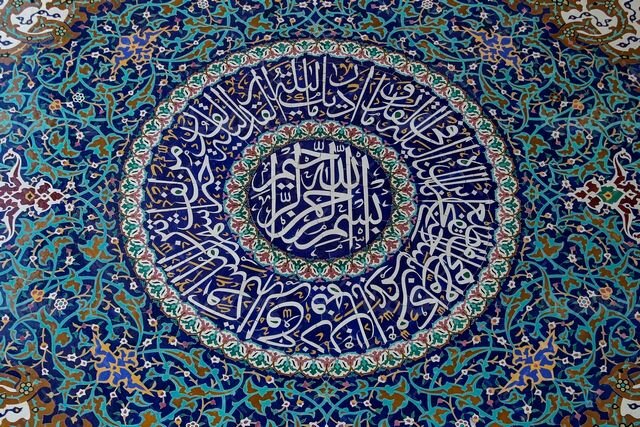Kashikari: a symbol of ornamental elements in Iran

TEHRAN - Kashikari, or tiling, stands as one of the paramount symbols and prominent ornamental elements in Iranian architecture, representing an ancient craft deeply rooted in the land. Initially, tiling predominantly utilized glazed bricks for the structural integrity and aesthetic enhancement of buildings. Over time, however, it transitioned to serve as a defining feature in the appearance and façade of structures.
The term "Kashi," Persian for 'tile,' derives its name from Kashan, a city renowned as the central hub of pottery and exquisite tile work in Iran.
According to Visit Iran, the origins of this art date back to ancient times, tracing its roots to the second millennium BC. Remarkable examples of enameled and painted bricks from the Achaemenid era have been unearthed from archaeological excavations at sites such as Chogha Zanbil, Susa Apadana Palace, and other ancient Iranian locations. During the Sassanid era, tile-making continued in a manner reminiscent of the Achaemenid style, albeit with thicker enamels.
With the advent of Islam, tile-making gradually transitioned into the realm of architecture, emerging as a crucial ornamental and protective element, especially in religious buildings. Subsequently, during the Safavid and Timurid eras, tile-making underwent rapid development and evolution. Modern scholars and mathematicians posit that Islamic Tile Art is intricately linked to mathematics and music. Among the most exquisite and ancient tiles from this period are the turquoise tiles of Isfahan and the ancient inscriptions found on Seljuk minarets.
The techniques employed in tile decoration encompass various methods, including luster, under-glaze painting, over-glaze painting, mosaic faience, angular, Mo’qeli or Bannai tiles, and Cuerda Seca. Some techniques are exclusively utilized for interior decoration, while others are suitable for both interior and exterior applications. Among craftsmen, Cuerda seca tiling is revered as one of the most distinguished arts preserved in historical monuments from the Islamic Tile Art era.
Each color used in tiling represents a distinct period in history. The colors present in ancient tiles, composed solely of a blend of lead and tin, have exhibited remarkable resilience over centuries, retaining their intrinsic beauty.
Notable masterpieces of Iranian tile art include the Susa Apadana Palace, Jame Mosque and Sheikh Lotfollah Mosque in Isfahan, Tomb of Sheikh Abdussamad Isfahani in Natanz, Holy Shrine of Imam Reza (AS) in Mashhad, Sepahsalar Mosque and School in Tehran, Moaven al-Molk Tekiye in Kermanshah, Dome of Soltaniyeh in Zanjan, and the Blue Mosque in Tabriz.
AM
Leave a Comment